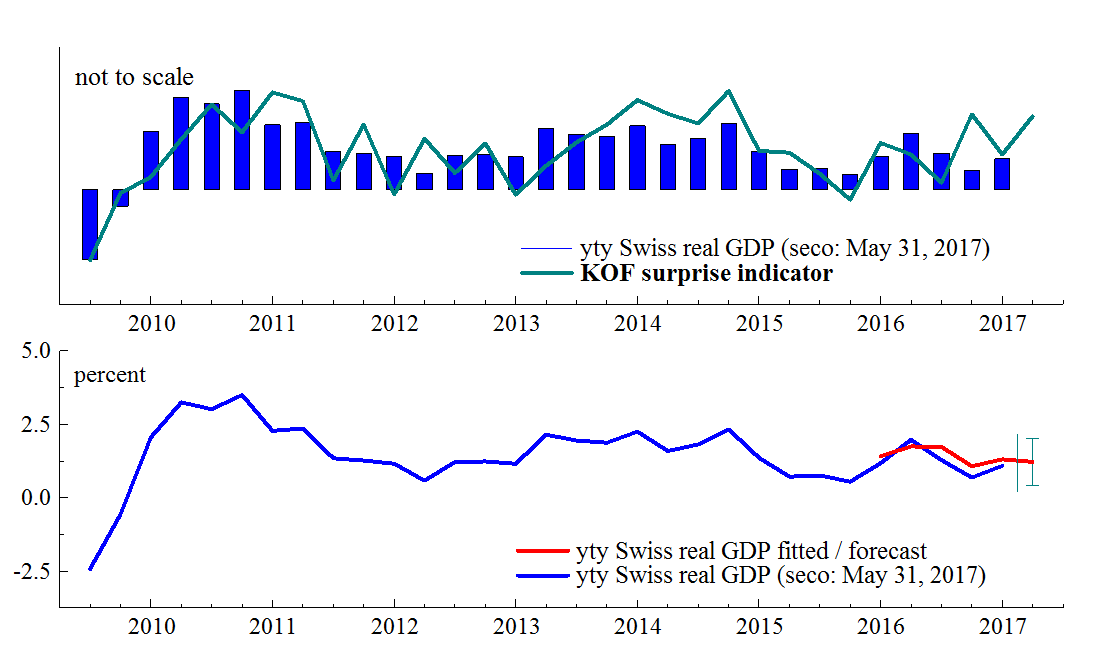| |
|
|
|
| |
T |
GDP forecast based on semantic business cycle identification |
TEST |
| |
|
Release 2017-08-16 |
|
| |
|
Table: Swiss real gross domestic product with forecast |
|
|
|
Date |
Year-to-year growth (%) of Swiss real gross domestic product (GDP) |
| |
fitted / forecast |
standard error |
seco estimates* |
2016(4) |
1.07 |
- |
0.65 |
0.69 |
| 2017(1) |
1.31 |
- |
- |
1.09 |
| 2017(2) |
|
0.40 |
- |
- |
|
|
| |
|
Sources: Own calculations, forecast for 2017(2), fitted values otherwise, *seco releases (left: March 2, 2017, right: May 31, 2017).
Sample: 2000 (2) - 2017 (1), Forecast: 2017 (2)
Note: Forecast obtained by best nowcasting model. |
|
| |
|
|
|
| |
|
Forecast update. The «KOF surprise indicator» for measuring Swiss economic dynamics records a slight increase to -0.022 (up from -0.032) in the second quarter of this year. Its recent decline has therefore already stopped which indicates a steady expansion of the Swiss economy.
A short-run prediction of Swiss GDP growth based on the «KOF surprise indicator» ahead of this year's major GDP data revision obtains a moderate rate of growth of about 1.2 percent year-on-year. |
|
| |
|
|
|
| «home |
|
Special features:
«From nothing comes nothing» argues that money never is a free good though banks seem to produce it out of thin air (in German). Details»
Finanz und Wirtschaft publishes «The curious laud of the economic mainstream» that wonders why some economists tend to fence off criticism without quoting the critics. Some answers are available (in German) here» |
|
| |
|
|
|
| |
|
Figure: Business cycle indicator based on semantic identification in comparison to real GDP: Ex-ante forecast properties |
|
| |
|

|
|
| |
|
|
|
| |
|
|
|
| «home |
|
|
|
| |
|
*Standard error of regression refers to baseline model published in the first release. |
|
| «home |
|
|
|
|